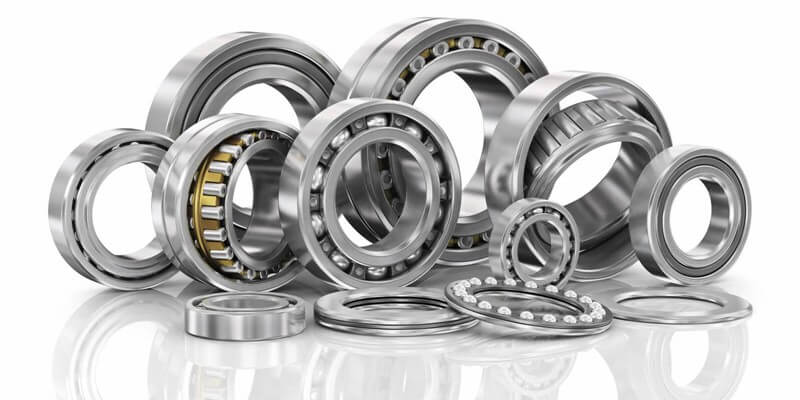- November 18, 2021
Bearings are the basic parts of machinery and are widely used in the machinery industry, and they are also the support parts of various machines. There are various types of bearings, and each type of bearing has its own characteristics.
The process integration of turning and bearing is the cornerstone of efficient and precise motion. Check how WayKen creates precision turned parts for you.
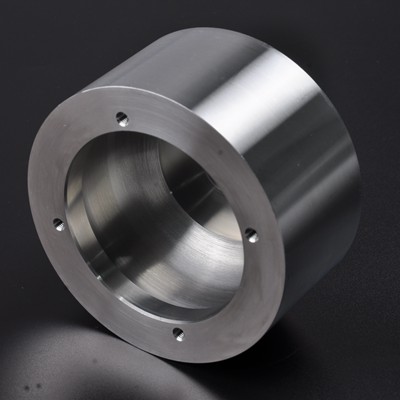
What is a bearing?
Bearing is the part that supports the shaft, used to guide the rotational movement of the shaft and bear the load transferred from the shaft to the frame. Bearing is a widely used and strictly required component and basic part of the machinery industry. It is the supporting element of the rotating shaft or movable part of various machines, and it is also the supporting element that relies on the rolling body to achieve the rotation of the host. It is also called the joint of machinery.
Classification of bearings
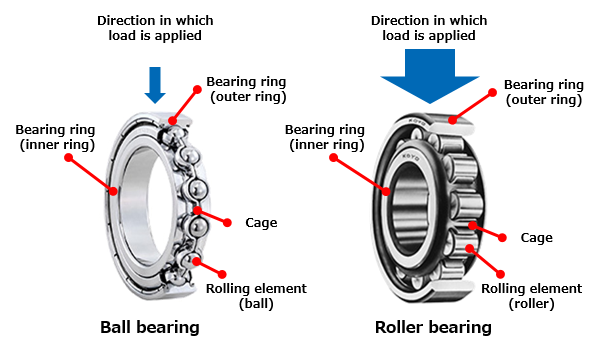
1. According to the presence or absence of rolling bodies, bearings can be divided into rolling bearings and plain bearings.
Rolling bearings can be divided into ball bearings, cylindrical roller bearings, and tapered roller bearings according to the shape of the rolling body.
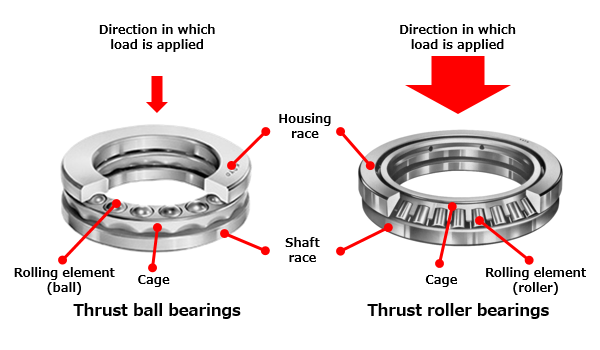
2. According to the bearing characteristics can be divided into centripetal bearings and thrust bearings.
Radial bearings are categorized into radial ball bearings and radial roller bearings. Thrust bearings are categorized into thrust ball bearings and thrust roller bearings.
Types of bearings and their characteristics
1. Deep groove ball bearings
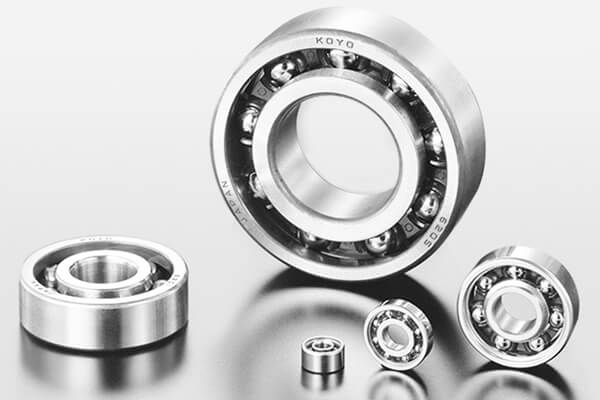
Characteristics of deep groove ball bearings.
(1) Simple structure, low manufacturing cost, easy to achieve high manufacturing accuracy.
(2) Low friction coefficient and high speed.
(3) Mainly used to bear radial load, but in the bearing radial clearance increases, with the nature of angular contact ball bearings, can withstand two directions of alternating axial load;.
(4) It cages more steel plate stamping wave-shaped cage, large bearing more car metal solid cage.
(5) They are the most representative rolling bearings, widely used, very durable, without frequent maintenance.
(6) With a certain degree of alignment ability, the size range and form change in a variety of ways.
2. Cylindrical roller bearings
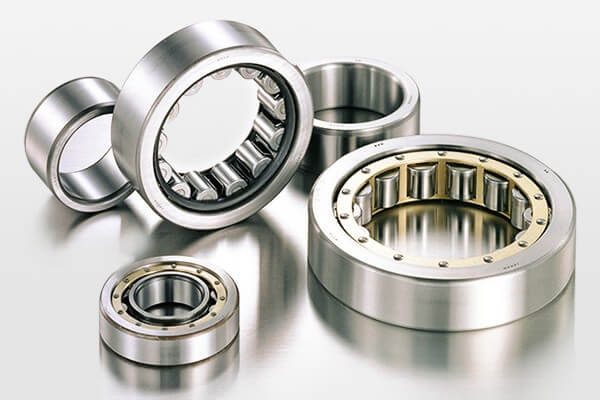
Characteristics of cylindrical roller bearings.
(1) The rollers and raceway are in linear contact, so the capacity of the radial load is large and can withstand heavy loads and shock loads.
(2) Small friction coefficient, can be used for very high speed working occasions, its limit speed next to deep groove ball bearings.
(3) N-type and NU type cylindrical roller bearing can do axial movement, can adapt to the thermal expansion or installation error caused by the shaft and the housing relative position changes, can be used to support the free end.
(4) The processing needs of the shaft or base hole are high, to strictly control the relative deviation of the outer ring axis that may be caused by bearing installation, avoid the concentration of contact stress;
(5) The inner rings or outer rings of the bearings can be separated to facilitate installation and disassembly.
3. Tapered roller bearings
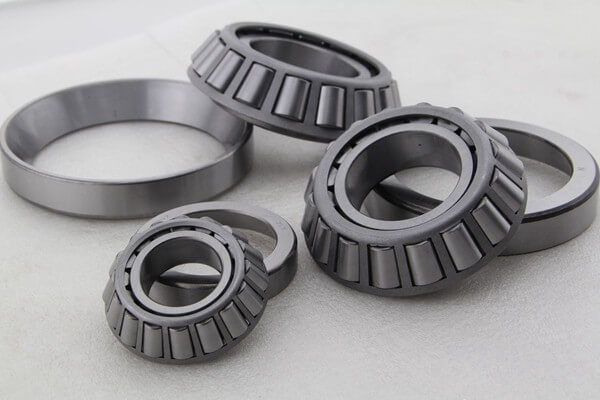
Characteristics of circular vertebral roller bearings.
(1) Inner ring and outer ring of bearing have tapered raceway, the shape of the rollers is round table-shaped. The roller is in line contact with the raceway and can withstand the heavy combined radial and axial loads as well as axial loads. The axial bearing capacity increases with the increase of contact Angle.
(2) Tapered roller design should make the roller and the raceway of the inner ring and outer ring contact line extended after the intersection of the same point on the axis of the bearing used to achieve rolling.
(3) Tapered roller bearings can be categorized into single row, double row, and four-row, and other different types according to the number of rollers installed. This type of bearing also uses more imperial series products.
(4) The new design of tapered roller bearing uses strengthened structure, the longer diameter of rollers, the longer length of rollers, more rollers, and the rollers with convex shape are used, the capacity and service life are obviously improved. The contact of the big end face and the big retaining edge of the rollers is spherical and conical, which improves lubrication.
4. Thrust ball bearings
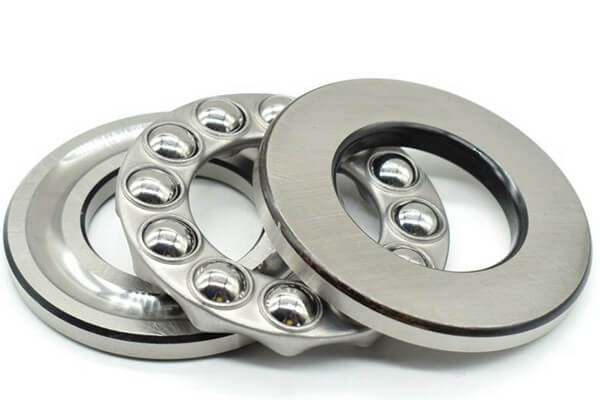
Characteristics of thrust ball bearings.
(1) The thrust ball are separable bearings, with a contact angle of 90°, which can be mounted separately and can only withstand axial load.
(2) Low limit speed. Steel ball plus centrifugal force squeezed to the outside of the raceway, easy to abrasion, but not suitable for high-speed operation.
(3) The one-way bearing can withstand one-way axial load, the two-way bearing can withstand two-way axial load.
(4) With spherical seat ring thrust ball bearings with spherical alignment performance, can eliminate the impact of installation errors.
5. Thrust roller bearings
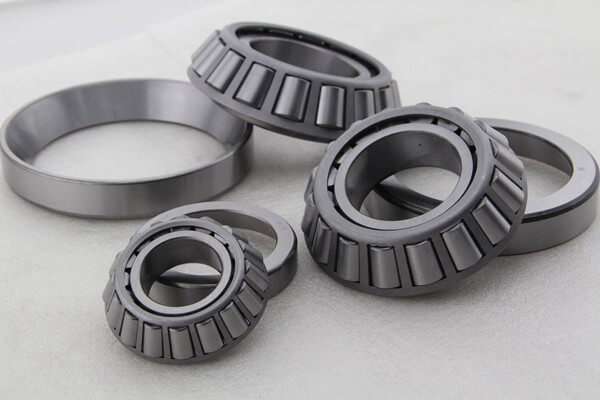
Characteristics of thrust ball bearings.
(1) Can only withstand unidirectional axial loads and minor shocks.
(2) Large bearing rigidity, small space occupation, large axial load capacity, and low sensitivity to shock load.
(3) Suitable for low speed, often used in work situations where thrust ball bearings are not applicable.
(4) Installation does not allow the axis of the shaft and the rings to be tilted.
6. Needle roller bearings
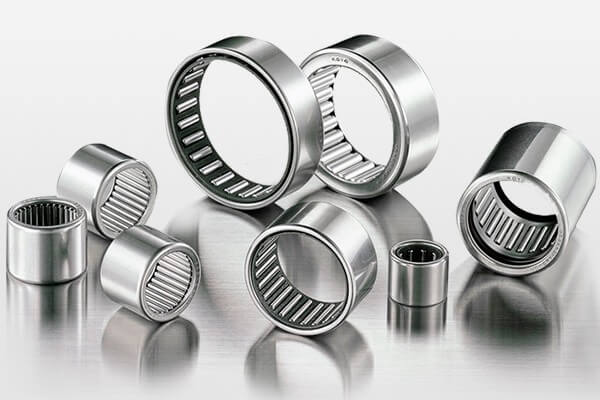
The characteristics of needle roller bearings.
(1) Small radial size of needle roller bearings, the radial bearing capacity is very high, can not bear axial load, only as a free end support use.
(2) Conducive to the miniaturization and lightweight of equipment.
(3) The use of needle roller bearings without an inner ring or without an outer ring, only with cage needle roller assembly, the requirements of the matching journal or bearing housing hole machining accuracy, surface hardness should be the same as the bearing collar raceway.
(4) They have a large coefficient of friction and are not suitable for higher speeds.
7. Plain bearings
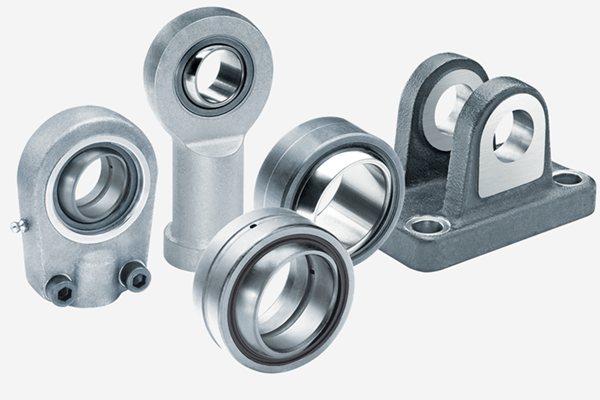
The characteristics of plain bearings.
(1) Smooth, reliable, and noiseless working of plain bearings.
(2) In liquid lubrication conditions, the plain surface is separated by lubricating oil without direct contact, but also can greatly reduce friction loss and surface wear, the oil film also has a certain ability to absorb vibration, but the starting friction resistance is large.
8. Magnetic bearings
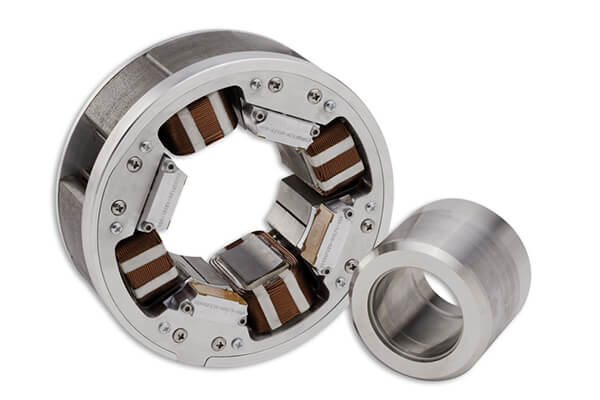
The characteristics of magnetic bearings.
(1) Compared with the traditional ball, plain, and oil film bearings, magnetic bearings do not have mechanical contact and the rotor can achieve high operating speeds.
(2) With the advantages of low mechanical wear, low energy consumption, low noise, long life, no lubrication, no oil pollution, etc., especially for high-speed, vacuum, ultra-clean, and other special environments.
(3) It can be widely used in the fields of machining, turbomachinery, aerospace, vacuum technology, rotor dynamics identification, and testing, etc. It is recognized as a promising new type of shaft.
How to choose different types of bearings?
1. Load
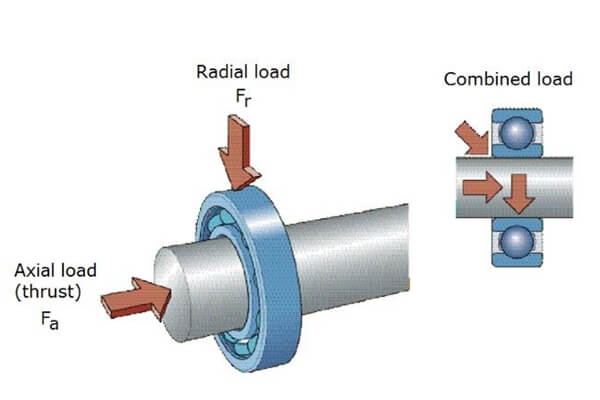
(1) When mainly bearing radial load (direction perpendicular to the shaft), choose the radial bearing, when mainly bearing axial load (the same direction as the shaft), choose axial bearing. Axial load is also called thrust load.
(2) When the bearing bears a small load, choose ball bearing; when the load is larger, choose roller bearing.
(3) A bearing while bearing radial load and axial load (synthetic load), if the synthetic load is small, choose deep groove ball bearings or angular contact ball bearings; if the load is larger, choose tapered roller bearings.
(4) Generally, the low-speed heavy load conditions will be used under the plain bearing.
2. Rotating speed
(1) Generally speaking, in higher speed working conditions, it is appropriate to use deep groove ball bearings, angular contact bearings, cylindrical roller bearings.
(2) On the lower-speed working occasions, can use tapered roller bearings.
(3) Thrust ball bearing limit speed is low, can only be used for lower speed occasions.
(4) For the same type of bearings, the smaller the size, the higher the allowable speed. In the selection of bearings, one should pay attention to making the actual speed is lower than the limit speed.
3. Accuracy
(1) Machine tool spindle, precision machinery, and instrumentation, etc. require high accuracy of rotating body runout, should be used precision level 5, 4, 2 and other high precision bearings of deep groove ball, angular contact ball, tapered roller, cylindrical roller, and thrust angular contact ball bearings.
(2) Require high rotational accuracy, more use of deep groove ball, angular contact ball, and cylindrical roller bearings, etc.
(3) For most of the machinery, the choice of 0 tolerance bearing is enough to meet the requirements of the host.
4. Rigidity
(1) Rolling bearing elastic deformation is very small, in most machinery can not be considered, but in some machinery, such as machine tool spindle, bearing rigidity is an important factor, generally should be selected cylindrical and tapered roller bearings. Because these two types of bearings are under load, the rolling body and raceway are point contact, rigidity is poor.
(2) Various types of bearings can also be preloaded to increase the rigidity of the support. Such as angular contact ball and tapered roller bearings, in order to prevent shaft vibration, increase the rigidity of the support, often in the installation of pre-applied certain axial force, so that the mutual compression.
5. Other
(1) In the radial space is limited by the occasion can choose needle roller bearings or needle roller and cage assembly.
(2) The bearing vibration, noise requirements of the occasion, can use low noise deep groove ball bearings.
(3) The requirements of high rotational accuracy of the bearing (such as machine tool spindle) and the application of high-speed conditions, should be selected higher precision than the ordinary level of bearing.
summary
In short, to choose a suitable bearing, a variety of factors should be considered. By comparing different types of bearings and their characteristics, we hope that your questions can be answered. WayKen is committed to providing you with a one-stop-shop and bearings and fastener solutions that fit your project.

